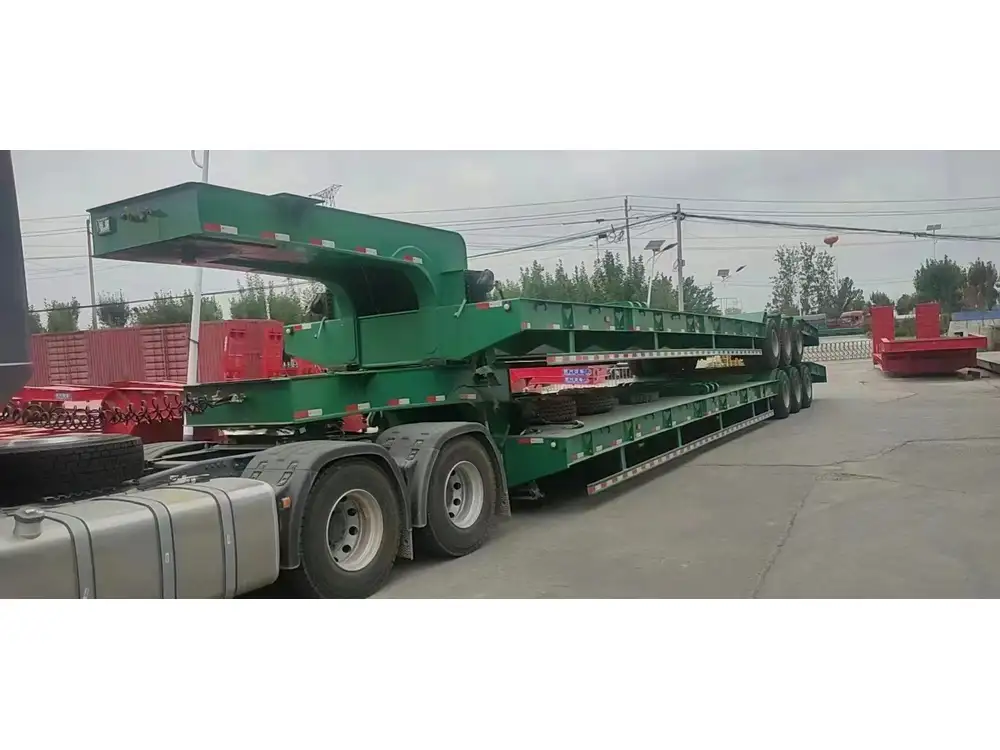Introduction to Semi-Trailers
In the transportation industry, semi-trailers play a crucial role in the supply chain, serving as a backbone for freight logistics across vast distances. Characterized by their unique design, semi-trailers consist of a trailer that connects to a tractor unit via a fifth wheel coupling. This distinctive architecture introduces several considerations, particularly regarding width. The understanding of how wide a semi-trailer is on the outside can mitigate compliance issues, enhance maneuverability, and ensure safety on the road.
Defining Semi-Trailer Dimensions

Standard Semi-Trailer Width
Standard semi-trailers in the United States typically occupy a fixed width of 8.5 feet (102 inches). This dimensional standard has been established by federal regulations to facilitate optimal navigation on various roadways while maximizing load capacity.
| Dimension Type | Measurement |
|---|---|
| Overall Width | 8.5 feet (102 inches) |
| Length (Typical) | 48 to 53 feet |
| Height (Typical) | 13.5 to 14.5 feet |
| Interior Width | Varies (under 8 feet) |
However, it is essential to note that widths can vary actively with different configurations, adaptations, and state regulations.
Variations in Width
While 8.5 feet epitomizes the standard width, alternative designs, such as wider load semi-trailers, can extend up to 10 to 12 feet (120 to 144 inches). These wider versions are generally subject to special permits and road restrictions.
Overview of Common Variations
- Flatbed Trailers: Often maintained at a standard width; however, they may accommodate wider loads.
- Refrigerated Trailers (Reefers): Modest adjustments in width to facilitate better insulation.
- Lowboy Trailers: Typically designed for heavy equipment, they can extend in width for stability.

Compliance with Local Regulations
Different states may enforce various regulations concerning the allowable width for commercial vehicles. For example:
- California: Allows widths up to 102 inches for standard semi-trailers but has strict guidelines for loads exceeding this limit.
- Texas: Enforces a standard 102-inch width as well but provides more leniency for oversized loads depending on the route and time of travel.
Understanding these regulations is pivotal for fleet managers and drivers, allowing them to avoid costly fines and logistical nightmares.
Factors Influencing Semi-Trailer Width
Load Types and Their Requirements
Heavy Haul: Wider trailers may be necessary for transporting heavy or oversized machinery. This requires extraordinary attention to width restrictions and route planning.
Temperature-Controlled Goods: When transporting perishable items, the design of refrigerated semi-trailers might necessitate variations in width to enhance insulation efficiency.

Safety Considerations
Broader trailers might influence stability, center of gravity, and road handling ability. When fully loaded, semi-trailers need to maintain balance. Wider configurations often afford lower centers of gravity, optimizing safety and maneuverability. Striking a balance in width reduces rollover risks, enhancing operational safety.
Aerodynamics and Fuel Efficiency
Wider semi-trailers may also affect aerodynamics. Thus, carriers need to consider the implications on fuel efficiency, as broader profiles may lead to increased drag. Innovative designs, such as side skirts and trailer tails, can play a role in optimizing airflow around semi-trailers while maintaining standard widths.
Advantages of Knowing Width Specifications

Enhanced Route Planning
Understanding the exact width aids in meticulous route planning, particularly when traversing narrow roads, tight turns, and bridge clearances. Effective route planning based on exact dimensions can reduce delays and prevent accidents.
Permit Acquisition
Heavy or oversized loads typically require special permits. A comprehensive understanding of the semi-trailer’s width can facilitate accurate applications, allowing for smooth transport operations.
Risk Mitigation
Awareness of a semi-trailer’s width minimizes the risk of inefficient loading and unloading processes. Such preciseness ensures that cargo remains stable during transit, reducing the probability of accidents on the road.

Practical Applications: Measuring Semi-Trailer Width
Step-by-Step Measurement Guidelines
To accurately determine the width of a semi-trailer:
Select the Measurement Tool: Use a precise measuring tape or laser distance measure for optimal accuracy.
Identify Measurement Points: Measure from the furthest points on one side of the trailer to the furthest point on the opposite side.
Record Results: Note down the width measurement in inches and feet for quick reference.
Consider External Elements: Keep in mind any additional equipment, such as side rails or extensions, that could further extend the trailer’s width.
Utilizing Tools for Precision
Incorporating GPS and onboard measurement tools enhances accuracy in measuring dimensions, particularly for larger fleets.

Conclusion: Navigating the Complexity of Semi-Trailer Widths
Understanding the complexities surrounding the width of semi-trailers is vital for manufacturers, logistics personnel, and operators alike. Equipped with this knowledge, stakeholders can effectively manage their fleets, comply with regulations, and plan their routes with newfound confidence.
Key Takeaways
Standard Width: Most semi-trailers maintain a standard width of 8.5 feet, subject to variations based on design and state regulations.
Regulatory Landscape: Adhering to state-specific regulations is paramount to avoid legal concerns and penalties.
Load Management: Precise width measurements can greatly assist in effective load management, ensuring safety, stability, and compliance.
Technological Advances: Embracing technology for measurement and route planning can significantly enhance operational efficiency.
By integrating a thorough understanding of how wide semi-trailers can be, stakeholders not only streamline their operations but also enhance safety and regulatory compliance in their logistics strategies. Careful consideration of all these factors will lead to successful semi-trailer utilization, optimizing transportation routes and ensuring efficient deliveries across the landscape of freight logistics.



